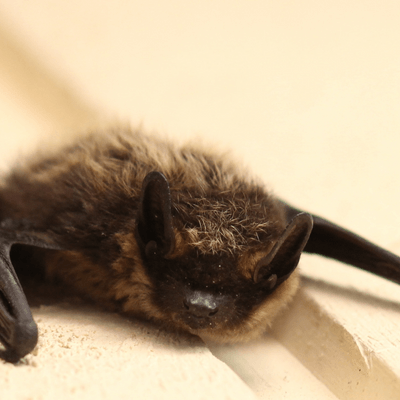
Slide title
Write your caption hereButton
Bat Removal & Control
Bat Removal & Control
Nature's only flying mammal is an enigma. They're creepy, but they're also kind of cute. They're important for research and developing medicines but are also known to spread diseases. They're associated with filth yet spend inordinate amounts of time grooming themselves. We're talking about bats.
Bats can travel far and wide, with some species reaching speeds of 100 miles an hour as they use echolocation to find their prey. Like an extended human hand, a bat's wing includes a flexible membrane that stretches between long multi-jointed finger bones. Their propensity to hang upside down isn't just a comfortable sleeping position; it allows them to drop down quickly and use the momentum from their fall to easily reach high speeds in flight. Valves in their veins and arteries keep their blood from flowing into their heads while they hang. Those adaptations make them extremely tough to catch, limiting their predators primarily to owls, hawks, and snakes.
Humans are their other predators. However, if you find one or more on your property, hiring a pest control expert for removal isn't enough. You'll also need to have them work on exclusion, taking steps to eliminate the bats' entryways and whatever else drew them to your space in the first place. Once inside, the animals become loud, leave behind large quantities of smelly guano that leaves unsightly stains, and expose the home or business owner to disease.
Bats can sneak in through holes as small as the diameter of a dime, and they'll find them in places that are hard for people to see, such as around plumbing lines and power cables, air intakes and exhaust vents, chimneys, fans, and spaces where shrunken or warped siding has created a gap. It takes an expert to identify those small holes and properly seal them to keep the bats from returning.
There are over 1,400 species worldwide, about 45 in North America, including just 8 in Wisconsin. These creatures harbor more diseases than the average mammal, carrying major zoonotic viruses like Ebola, severe acute respiratory syndrome, and of course, the novel coronavirus. They also host rabies, histoplasmosis, salmonellosis, and various parasites.
The Department of the Interior has labeled them the heroes of the night for their roles in reducing nuisance insect populations, spreading seeds, and pollinating fruits. They're credited with the survival of over 300 fruit species, including bananas, avocados, mangos, figs, cacao, and agave. They can eat their total body weight in insects nightly, with each bat's daily bug consumption totaling in the thousands. There's even an entire "Bat Week" dedicated to conserving the creatures in October. To illuminate their importance, all species are Federally protected in Wisconsin, and it is illegal to kill them.
Pest control isn't solely about reacting when you realize you have an infestation. You need a clear line of defense against invasions in the first place. 1st Defense Pest Solutions has you covered. We offer remediation services, exclusion, one-time treatments, and a variety of maintenance programs for both residential and commercial properties. Our company is locally-owned and family-operated in southwest Wisconsin, so we're easy to get a hold of.
Contact us today in La Crosse and the surrounding areas for your bat and other pest issues.
All Rights Reserved | 1st Defense Pest Solutions
